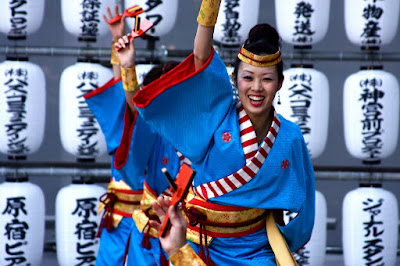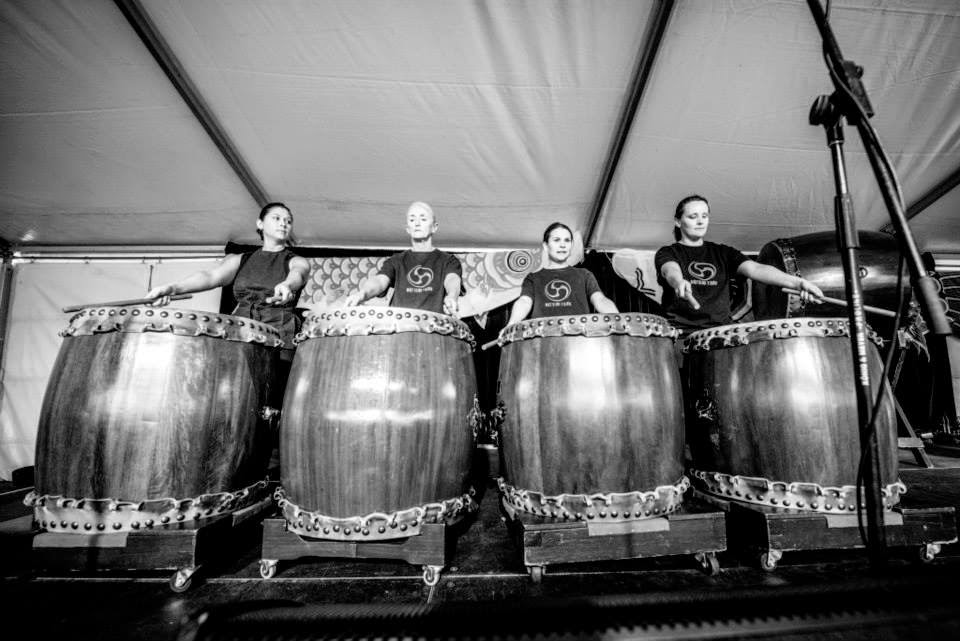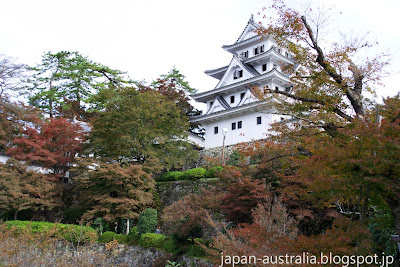The Gifu Nobunaga Festival is held on the first Saturday and Sunday of October. The festival honours the memory and feats of Oda Nobunaga, a samurai warlord who used Gifu City as a base on his mission to unify Japan during the warring states period (Sengoku Period). It is a celebration of his contribution towards the development of Gifu as a city and the legacy that he has left behind. The must see events are the memorial ceremony at Sofuku-ji Temple (Nobunaga’s family temple) and the samurai warrior parade down the main street.
Kogane Park Flea Market and Street Vendors
There is also a large flea market as well as various street vendors selling all kinds of festival food and snacks.
 |
| Street Vendors |
Samurai Warrior Parade
The samurai warrior parade starts with a marching band followed by ceremonial matchlock rifle firing and then various groups and historical figures including warriors, ladies and generals and even Lord Nobunaga on horseback himself. The parade starts at 12:30 pm from Gifu Station and ends at around 14:20 pm when the last group reaches Gifu City Hall.
 |
| Gifu Nobunaga Festival Mascot ~ Oda Nobunyaga |
 |
| Marching Band |
 |
| Samurai Warriors |
Some of the cast of heroes and historical figures include:
Oda Nobunaga was a major daimyo during the Sengoku period and was the initiator of the unification of Japan in the late 16th century.
 |
| Lord Oda Nobunaga |
Luis Frois, was a Portuguese missionary who befriended Nobunaga in 1569 and wrote about the history of Japan on his travels.
 |
| Luis Frois |
Lady No or Nohime was the wife of Oda Nobunaga, and was renowned for her beauty and cleverness.
 |
| Lady No (Nohime) |
Saito Dosan was a Japanese samurai who became the father-in-law of Oda Nobunaga.
 |
| Saito Dosan |
Shibata Katsuie was a Japanese military commander who served Oda Nobunaga.
 |
| Shibata Katsuie |
Oichi was the younger sister of Oda Nobunaga, and was equally renowned for her beauty and resolve as Nohime.
 |
| Oichi |
Lady Go was Oda Nobunaga’s niece.
 |
| Lady Go |
Yamauchi Kazutoyo served as a general under Oda Nobunaga.
 |
| Yamauchi Kazutoyo |
Kinoshita Tokichiro was also a general who served under Oda Nobunaga. He later became Toyotomi Hideyoshi when he succeeded his former master.
 |
| Kinoshita Tokichiro also known as Toyotomi Hideyoshi |
Takenaka Hanbei, also known as Takenaka Shigeharu was a Japanese samurai, who is remembered as being a clever strategist.
 |
| Takenaka Hanbei also known as Takenaka Shigeharu |
The Schedule of Events
Saturday
• Memorial Ceremony at Sofuku-ji Temple
• Musical Band Parade
• Kogane Park Flea Market
Sunday
• Samurai Warrior Parade
• Musical Band Parade
• Citizen’s Carnival
• Kogane Park Flea Market
The samurai warrior parade is held along Nagarabashi Dori from Gifu Station to Gifu City Hall. One of the best places to view it from is the intersection at Wakamiya-cho.
View Larger Map













































